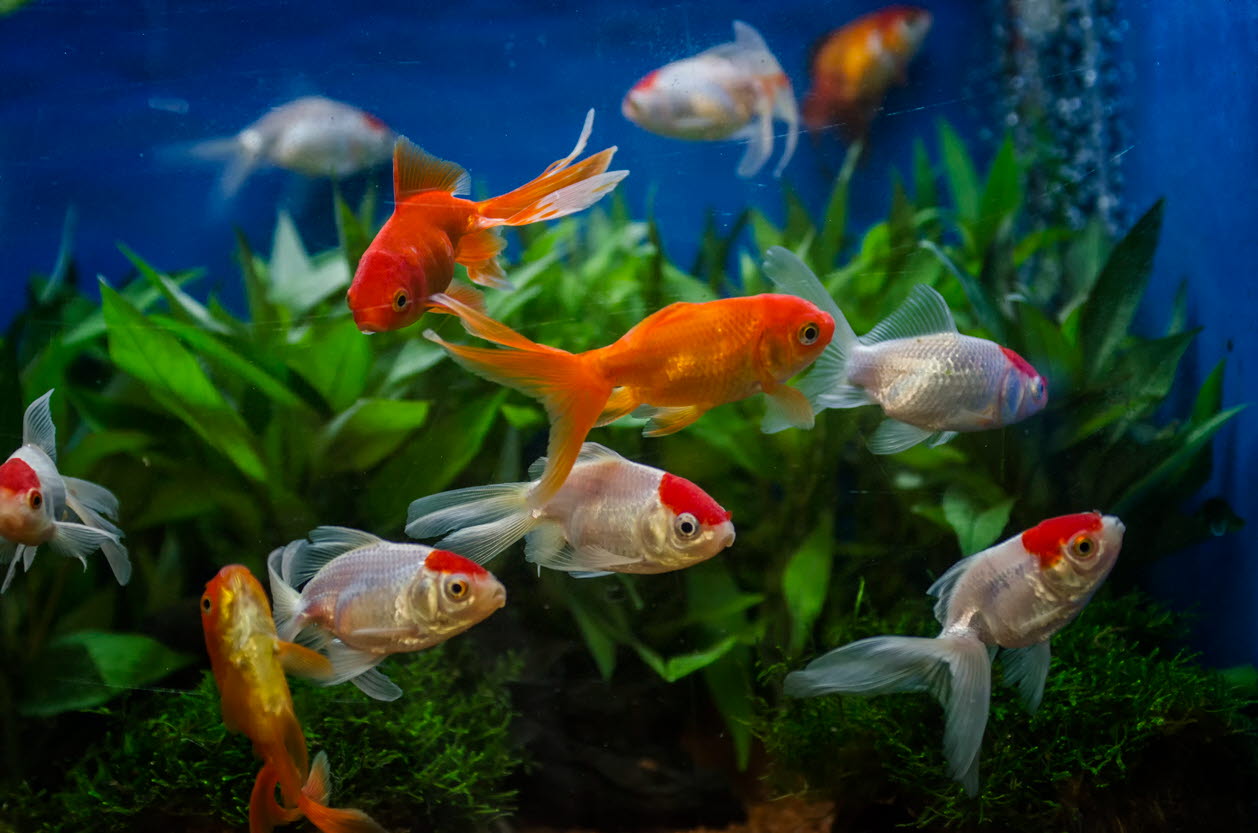Keeping pet fish

Keeping fish as pets can be a very rewarding experience. With regular care to keep them happy and healthy, fish can provide a colourful and relaxing feature at home, and are ideally suited if you live in an apartment or in a house without a large backyard.
Fish can be kept indoors or outdoors, with outdoor fish generally housed in a freshwater pond. Common breeds kept outdoors (depending on pond size) include Goldfish and Koi.
Indoor tanks or aquariums can range vastly in size, but are usually separated into three types:
- Cold freshwater
Common breeds: Goldfish, Tetras, Danios - Tropical (warm-water)
Common breeds: Guppies, Mollies - Marine (seawater)
Common breed: Clownfish
Creating the right environment
Regardless of aquarium type, fish health depends on the appropriateness and stability of their environment. To create the best home for your fish it is crucial to consider the following:
- Size of the aquarium: Although it depends on the type of fish you intend to keep, ideally your tank or pond would be as big as possible. One of the most common causes of fish illness is overcrowding. Seeking advice from your veterinarian or local aquarium on how many fish your tank can hold is always advisable.
- Temperature: If you have a tropical aquarium, you will need to have a heater and thermometer to guarantee the appropriate water temperature is maintained. It is also important to ensure that your tank or pond isn’t in direct sunlight. This may promote the growth of harmful algae and even cold-water fish do not tolerate rapid changes in temperature.
- Water quality: Every fish tank develops a nitrogen cycle which is closely linked to water quality. This cycle involves bacteria turning fish waste into chemical products and is vital to fish health. Ensuring water quality can be difficult and may vary depending on your location. Seeking advice from your local aquarium or veterinarian is recommended and a tank filter is often required.
- Substrate and structure: Substrate is the layer of material at the bottom of the tank and it plays an important role in the nitrogen cycle. Common substrates include gravel or sand. Fish are prey animals, so giving them some structure to hide in (e.g. plants) is a great way to make them feel safe. It is important to obtain your substrates and structures from a reputable aquarium supplier, to ensure that you do not introduce disease or chemicals into your tank or
What do I feed my fish?
Depending on the type of fish you have, fish food generally comes in the following forms:
- Dried flakes or pellets
- Frozen food
- Fresh food
It is important not to overfeed your fish, as decomposing food can cause your fish to become unwell.
How do I know if my fish has become sick?
It is important to make sure that you purchase your fish from a reputable source. When you choose a fish, ensure that it is swimming actively and does not stay in one corner of the tank. Common signs of fish illness include:
- Drooping fins
- Changes to colour
- Swelling of the belly or eyes
- White spots
- Difficulty swimming or regulating buoyancy
As fish are prone to fungal infection and parasites, it is important to remove the affected fish to a smaller tank if possible. This may help prevent further spread of infection while you contact your local aquarium or veterinarian for further advice.
